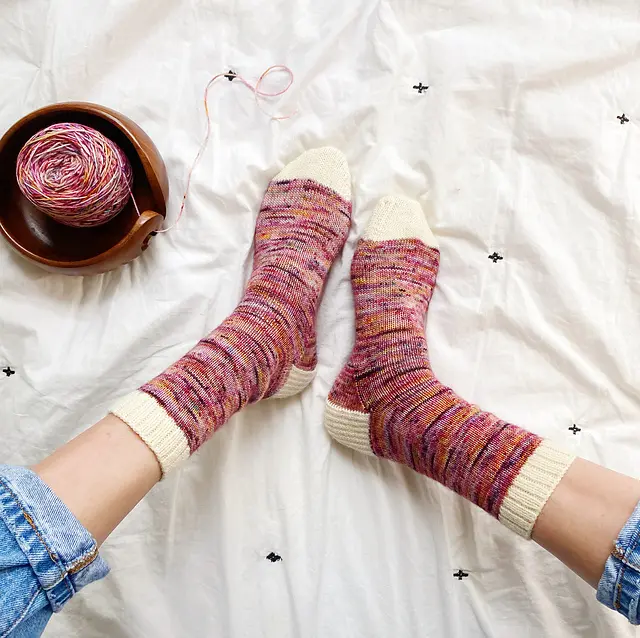can i use wool yarn 4 weight for socks -Knitting socks is a tradition that spans centuries, combining practicality with creativity. Wool yarn, in particular, has been the fiber of choice due to its thermal properties, comfort, and durability. But when it comes to choosing the right wool yarn weight for sock knitting, the options can get somewhat tangled. One common question arises: Can I use 4 weight wool yarn for knitting socks?
Understanding Yarn Weight
Before delving into whether 4 weight wool yarn is suitable for sock knitting, it’s essential to understand what yarn weight means. Yarn weight refers to the thickness of the yarn strand, categorized by a standard numbering system, where the numbers correspond to how fine or bulky the yarn is. Weight 4 is known as worsted-weight yarn, one of the most popular and versatile yarn weights available.
Worsted-weight yarn is a medium-thick yarn that’s perfect for knitting socks. It’s not too thin or too thick, so it’s easy to work with and creates a nice, even fabric. The most common type of worsted-weight yarn is made from wool, but you can also find it in other fibers like cotton or acrylic.
The Case for 4 Weight Wool Yarn in Sock Knitting
Pros:
- Durability: 4 weight yarn, being thicker, typically offers robustness. This quality is desirable in socks, which undergo a lot of wear and tear.
- Warmth: If you’re looking for extra warmth, the density of 4 weight wool yarn provides an additional insulating layer.
- Faster Knitting: Socks knitted with 4 weight yarn can be completed faster due to the thicker strands resulting in fewer overall stitches.
Cons:
- Too Bulky for Regular Shoes: Socks made with 4 weight yarn might not fit comfortably into standard footwear due to their thickness.
- Possible Durability Issues: Ironically, though thicker yarn is robust, the stitches are larger and may be prone to quicker wear in high-friction areas.
Considerations for Using 4 Weight Wool Yarn
Sock Construction and Fit
Using 4 weight wool yarn for sock knitting could affect the garment’s structure and fit. Since the yarn is thicker, make sure to adjust the number of stitches in your pattern accordingly. Additionally, think about the end use of the socks — whether they are for lounging, hiking boots or regular daily wear can influence your yarn weight decision.
Yarn Fiber Content
Wool is known for its stretching ability, but when evaluating 4 weight wool for socks, it’s important to consider fiber content. Pure wool may not have the same level of elasticity as a wool blend with nylon or elastane, which are fibers commonly used in sock yarns to provide stretch and shape retention.
Gauge and Swatching
With sock knitting, especially using a thicker yarn like weight 4, it is crucial to knit a gauge swatch. The gauge will tell you how many stitches per inch you are getting and whether you need to adjust your needle size or pattern to get a well-fitting sock.
Pattern Adjustment
When choosing to work with 4 weight yarn, you might need to select a specific pattern designed for this weight or make modifications to an existing pattern. Socks knitted with this yarn will be bulkier, so it’s paramount to consider this in your pattern choice.
Needle Size
Thicker yarn requires larger needles. Most sock patterns recommend needle sizes that correspond with finer yarns to achieve a dense, smooth fabric. When using 4 weight yarn, you’ll need to go up in needle size, but not too much that the fabric becomes too loose, as this can impact durability.
Crafting Socks with 4 Weight Wool Yarn
If you’re set on using 4 weight wool yarn for your socks, here are some tips:
Choose Appropriate Projects
Select sock projects that will benefit from a thicker yarn, such as slipper socks, boot socks, or cozy bed socks.
Reevaluate Heel and Toe
Pay special attention to the heel and toe areas. Since these parts experience the most friction, consider reinforcing them with a thinner yarn or doing a double-knit to ensure longevity.
Care and Maintenance
Bear in mind that these socks will need special care. Hand wash them if the wool is not superwash, and lay flat to dry to maintain shape and size.
Final Thoughts on Using 4 Weight Wool Yarn for Socks
Creating socks with 4 weight wool yarn is certainly achievable, and they can be a comforting, quick-to-knit project providing warmth and satisfaction. Be mindful of the factors that influence your finished socks: fit, length, bulk, and end use are all critical in determining whether worsted-weight yarn is suitable for your next sock knitting project.
Conclution
4 weight wool yarn can be used for socks when you desire a thicker, warmer result and you’re prepared to adjust patterns and expectations according to the yarn’s properties. While it may not be the traditional choice for everyday socks, it’s a great option for specific projects that require sturdiness and warmth.
If you’re looking for a sock yarn that’s a little bit different, worsted-weight wool is a great option. It’s thicker than traditional sock yarns and provides more warmth, which makes it perfect for winter wear. However, it can be challenging to find patterns specifically designed for this type of yarn. If you’re willing to make some adjustments to your pattern or use one that’s already been modified, then worsted-weight wool will work just fine.
Happy knitting!









